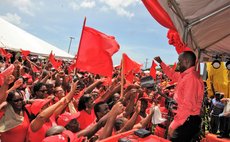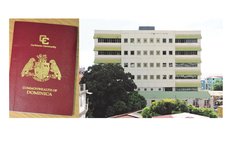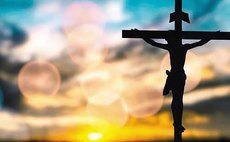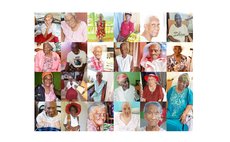The Road to May 29, 1979
In his four-part account of the events leading to the riots of May 29 1979 and the overthrow of the regime of Patrick Roland John, historian Dr. William Para Riviere has argued that the incidents were substantially rooted in the economic circumstances of the island just prior to independence.
That is a similar conclusion that Dr. Irving Andre arrived at some time ago. In their book "In Search of Eden: Essays on Dominican History" authors Irving W. André and Gabriel Christian posit that the sluggish economy in the early seventies and the enactment of draconian laws by the Patrick John regime were the two major causes of the riots.
Andre argues in an essay in that book entitled "Legislation and Repression in Dominica in the 1970's" that the government pursued a number of ill-fated economic ventures which did nothing to alleviate economic hardship in Dominica. These hardships caused resentment and unrest on the island, and precipitating the enactment of a number of laws which set the stage for the clash between the people and their government in 1979.
In the 4-part series, to be published in The SUN starting today, entitled "The Road to May 29, Dr. Riviere adds that other factors contributed to the violent uprising of 29th May 1979. These included widespread discontent; repressive laws that attacked freedom of the press and a proposed amendment to the Industrial Relations Act; a uniquely unified trade union movement under the leadership of Charles Angelo Savarin of the Dominica Civil Service Association and joint decisive action by the private sector, civil society, churches and farmers.
During that period the price of bananas that accounted for 75% of the island's export revenues fell from nine cents to five cents per pound. The prices for bay oil had also crashed in 1974.
Riviere and Andre both argue that the island's precarious economic system was further worsened by the paucity of aid from traditional donor countries. The problems of unemployment, declining consumer purchasing power and the lack of new capital formation combined to create an extremely bleak economic future.
Since John's government was strapped for cash it turned to apartheid South Africa, the establishment of a pseudo-free port zone in Portsmouth conceived by Texas businessman Don Pierson, and undertook other questionable capital ventures. Ralph Gonzales, the St. Vincent prime minister aptly described the riots in Dominica as "material contradictions of capitalist underdevelopment followed by dictatorial tendencies within a democratic cloak."
As the population endured that dreadful economy, the Government further risked confrontation with the militant trade unions by enacting the Industrial Relations (Amendment) Act and the Prohibited and Unlawful Societies and Association Act (The Dread Act).
In "The Dominica Story: A History of the Island", Dr. Lennox Honychurch advanced the view that the Dominica Civil Service Association and other opposition forces in Dominica angered by the Government's legislative agenda forced a confrontation with the John administration.
In a vivid description of the events on May 29, 1979, Dr. Honychurch wrote that after two weeks of intense campaigning by opposition forces, including the Dominica Freedom Party, some 10,000 demonstrators appeared around the House of Assembly at Government Headquarters on the morning of 29 May.
The peaceful demonstration began with police wandering through the crowd. Opposition members were cheered as they entered; government members were jeered and jostled. The Defence Force arrived, tear gas was fired, people scattered. In anger people hiding in the back alleys, their faces covered with damp cloth, threw stones at the army and the cement and glass building towering above the surrounding slums.
The Defence Force opened fire. One youth, Phillip Timothy, was shot dead. Ten others were injured, four critically. These events and others which followed led to a "palace coup"; it ended the reign of Patrick John on 21 June, 1979.
A few years ago Oliver Seraphin, the former Prime Minister of the Interim Government suggested that the events of 29th May, 1979 should be forgotten because the two antagonists in 1979, the Dominica Labour Party and the Dominica Freedom Party, had formed a coalition Government. We disagree; history should not change based on the colours of the political party in power.
A few years ago the DLP government went about not only forgetting, but erasing history, when it removed a bust of Timothy and a mural of the uprising located outside Government Headquarters.
Dr. Riviere demonstrates his disagreement with the notion that that history should be forgotten by beginning each instalment of "The Road to May 29," with the George Santayana quote: "Those Who Do Not Remember the Past Are Condemned to Repeat It."




